Garden Ideas Slabs: Creative and Stylish Outdoor Solutions
Creating a beautiful garden space can be both exciting and rewarding. Among the various elements that can enhance your outdoor area, garden slabs play a crucial role. They offer not only practical benefits, such as an easy-to-maintain surface, but also aesthetic appeal that can elevate your entire landscape.
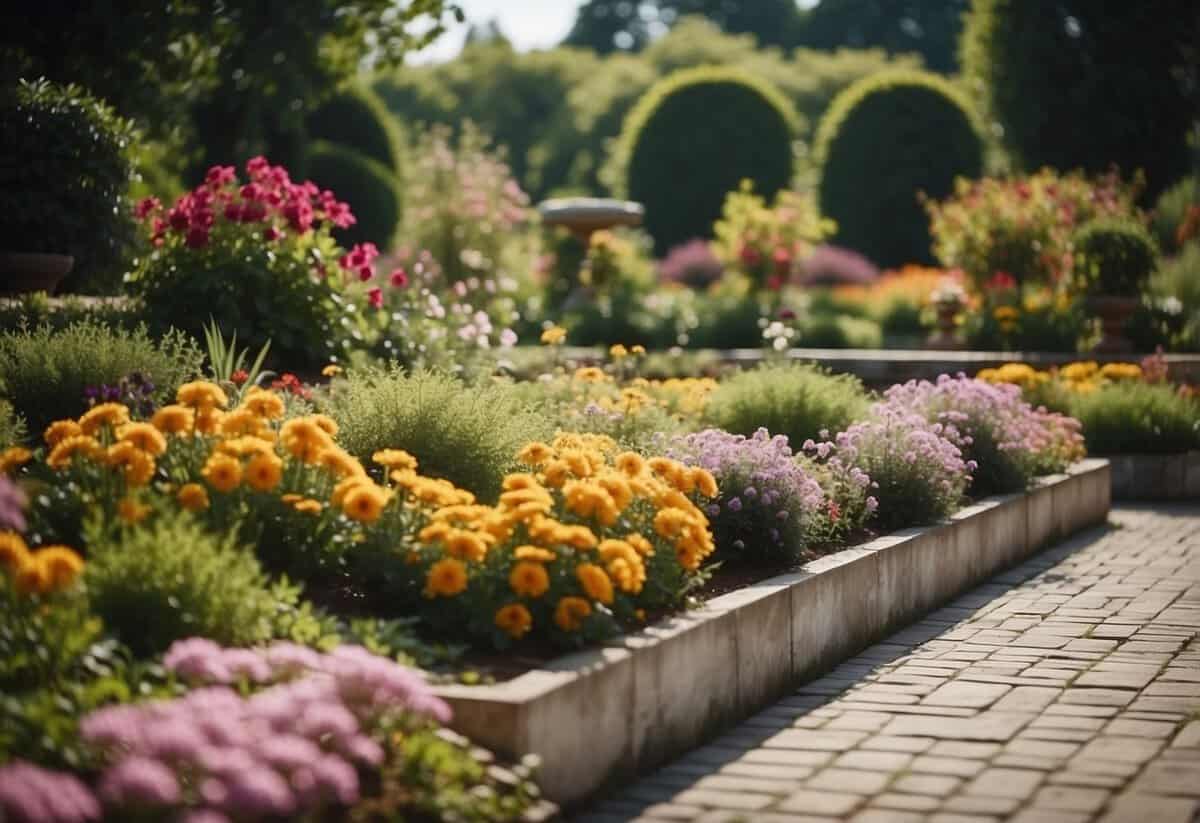
Why choose garden slabs for your outdoor space? They provide a versatile and durable foundation for patios, pathways, and seating areas. With many styles and materials available, you can find the perfect match for your garden’s design and your personal taste. Whether you prefer the classic look of stone or the modern touch of concrete, garden slabs can help you achieve the dream garden you’ve always wanted.
1) Modern Grey Slate Tiles

Modern grey slate tiles can transform your garden into a stylish and inviting space. These tiles are known for their sleek and contemporary look, making them a popular choice for patios and pathways.
Grey slate tiles are durable and weather-resistant. This means they can handle heavy foot traffic and withstand harsh weather conditions.
You can also mix grey slate tiles with gravel to create visually interesting zones in your garden. This combination not only looks great but also adds texture to your outdoor space. For more ideas, check out OutsideModern’s slate patio designs.
2) Rustic Sandstone Pavers

Rustic sandstone pavers add a warm, natural look to your garden. Their earthy tones blend beautifully with outdoor greenery. These stones can create a relaxed, inviting atmosphere.
You can use sandstone pavers to design a traditional patio space or garden path. They look great with rustic clay pavers or river-worn gravel, adding texture and variety.
Sandstone pavers are durable and weather-resistant. They don’t require much upkeep, making them a practical choice. Learn more about sandstone landscaping ideas to get inspired for your garden.
3) Hexagonal Limestone Slabs
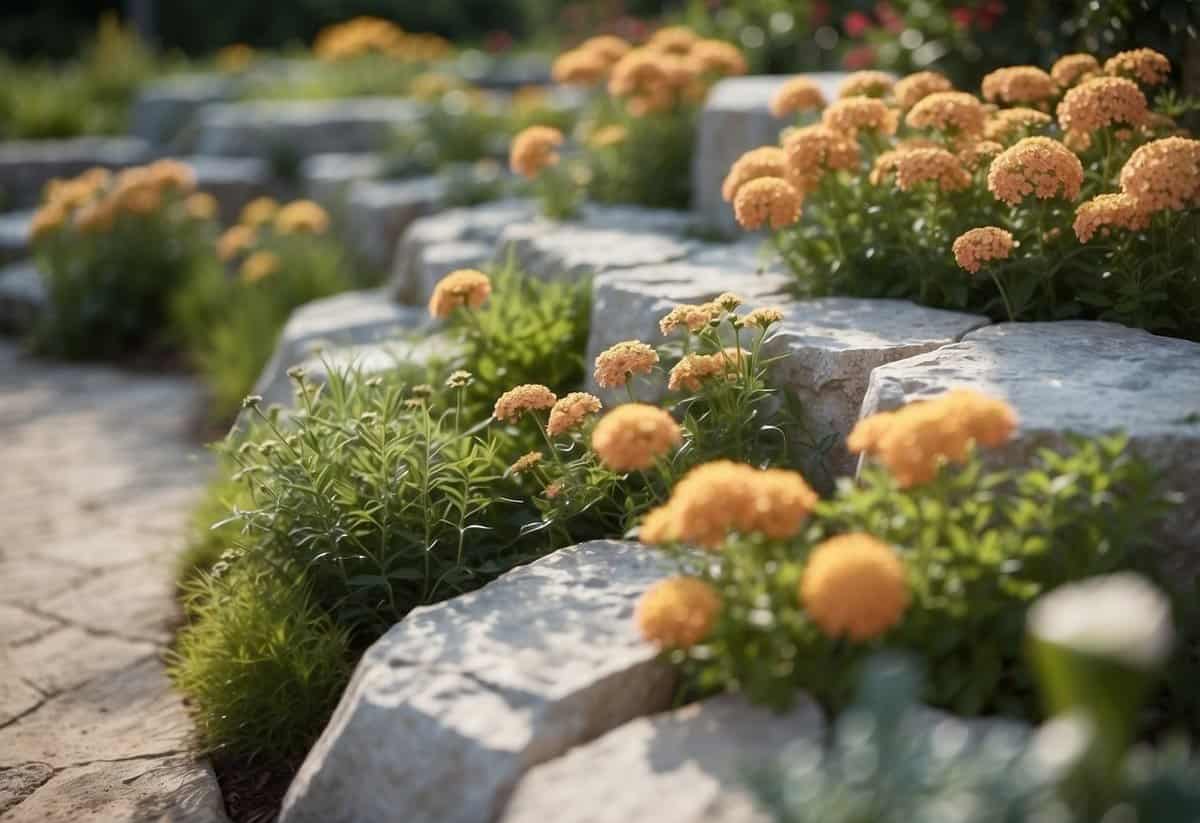
Using hexagonal limestone slabs is a great way to add unique flair to your garden. These slabs are both stylish and durable, perfect for creating interesting patterns on your patio or walkway.
You can find hexagonal limestone in a variety of colors, from classic gray to warm tan. They fit together like a puzzle, making installation easier. With these slabs, your garden will look modern and elegant.
For more ideas on limestone slabs, check out this resource. It’s filled with inspiration and tips to help you design your perfect outdoor space.
4) Patterned Concrete Slabs

Patterned concrete slabs can make your garden feel unique and stylish. These slabs can be stamped with various designs to resemble bricks, stones, or tiles. This makes them a great way to add a touch of elegance to your outdoor space.
You can choose from different patterns and colors to fit your garden’s theme. For more inspiration, check out different concrete patio ideas.
Adding a pattern can enhance the look of plain concrete, making your garden more visually appealing without needing extra decor. Consider exploring decorative concrete options for an inviting outdoor area.
5) Reclaimed Red Brick Pavement
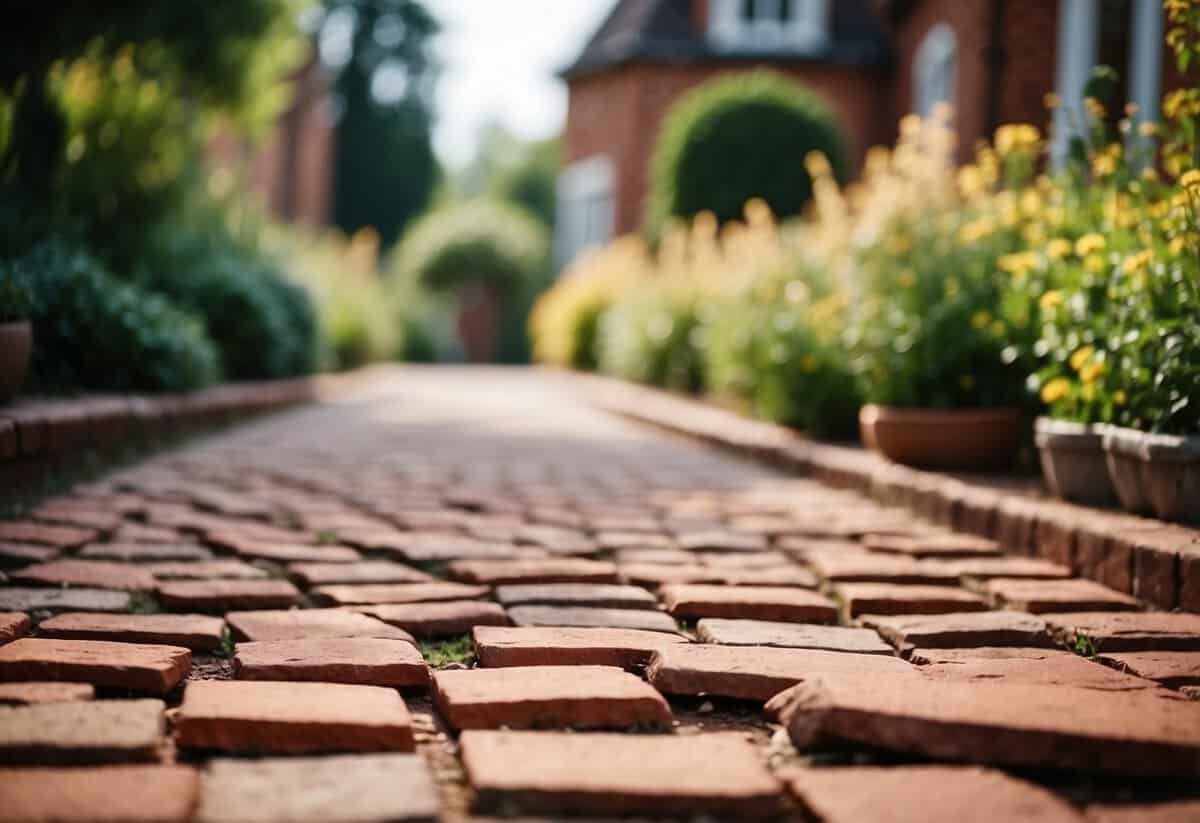
Using reclaimed red bricks in your garden can give it a charming, rustic feel. These bricks can often be found for free, making it a budget-friendly option.
Create a beautiful garden pathway with these bricks by arranging them in patterns like basket weave or herringbone. This can add both visual interest and functionality.
Red bricks are durable and offer good drainage. They can withstand different weather conditions, making them a practical choice for your garden. Start your project today and enjoy a unique, eco-friendly path.
6) Granite Cobblestone Squares

Granite cobblestone squares bring a classic and timeless look to any garden. These sturdy stones can handle heavy foot traffic, making them a practical choice for walkways and patios. Their natural, rough texture provides a non-slip surface, which is great for safety.
Mixing granite cobblestone squares with other stone materials can create a unique and appealing design. You can even use them to edge garden beds, blending functionality with style. For more ideas on how to use granite in your garden, check out these decomposed granite landscaping ideas.
Neutral Travertine Tiles
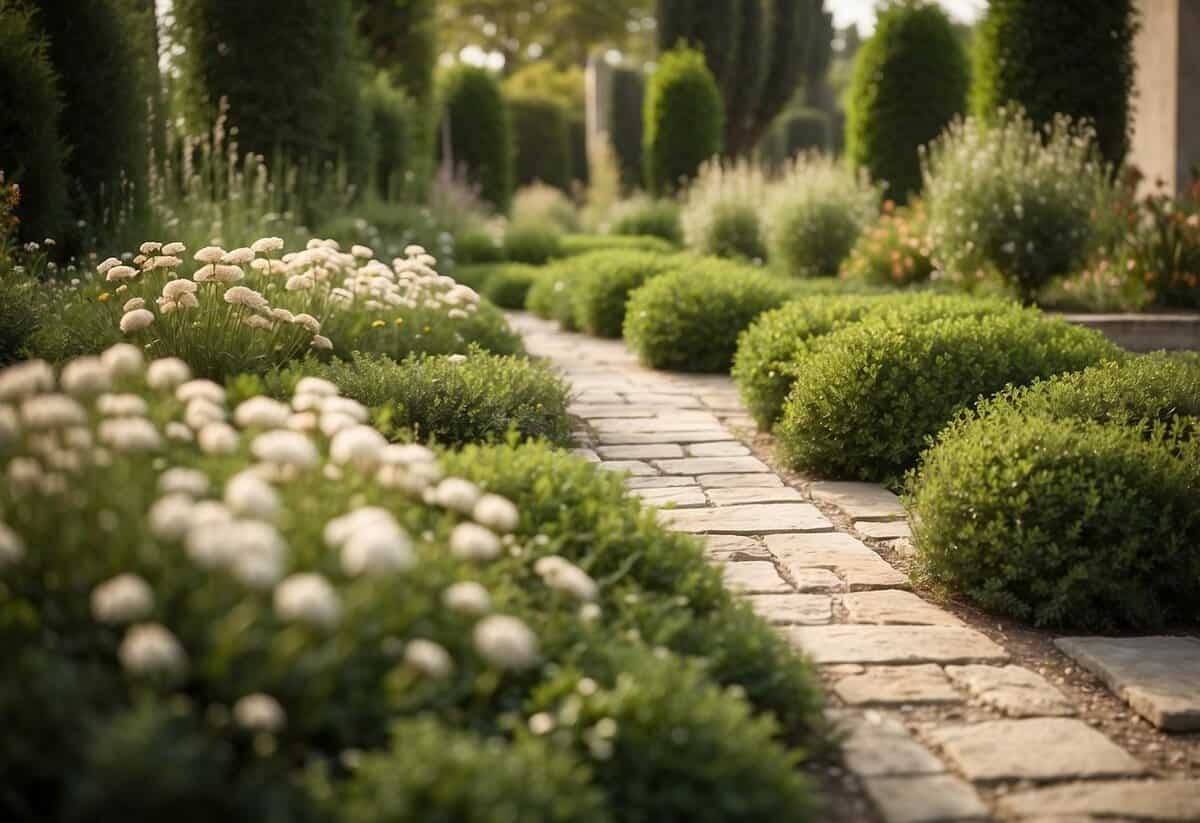
You can transform your garden with neutral travertine tiles. These tiles come in gentle hues like ivory, beige, and soft browns. Their subtle colors can blend seamlessly with any garden design.
Travertine is not only attractive but also durable. It can handle high foot traffic and is perfect for outdoor spaces. Plus, its ability to withstand up to 8000 pounds per square inch makes it a practical choice for busy patios.
For easy maintenance, you should rinse and dry the tiles regularly to keep them looking great. This will help preserve their natural beauty over time.
8) Mosaic Pebble Slabs

Creating mosaic pebble slabs for your garden can add a unique and artistic touch. Start by collecting smooth, flat-sided pebbles for the design.
Arrange your pebbles in patterns. Popular designs include spirals, circles, and waves. Pour mortar to set them, making sure it’s thick like pudding.
Let the slabs set away from direct sunlight for 48 hours. Once dry, brush off any loose mortar and rinse with water. For a final touch, clean any remaining film with a rag and muriatic acid if necessary.
For more details, check out Fine Gardening’s guide.
9) Porcelain Garden Decking
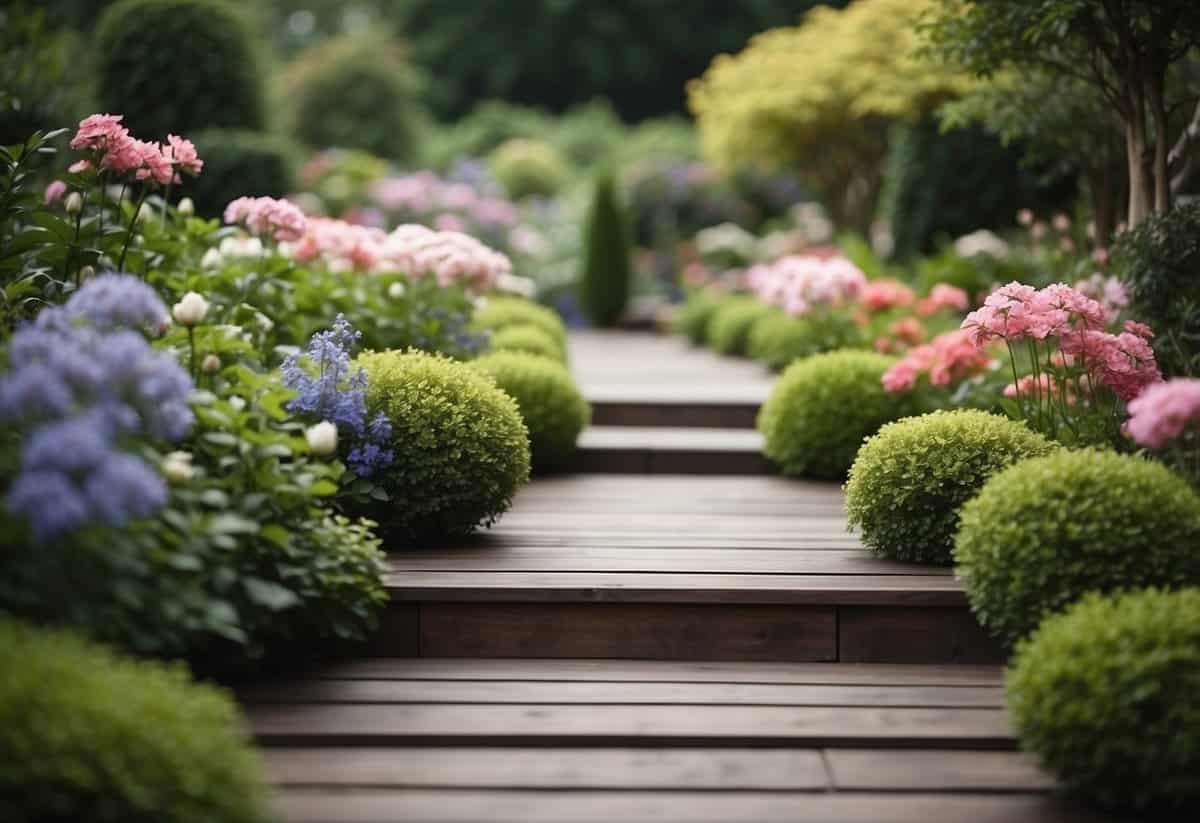
Porcelain garden decking is a stylish option for modern outdoor spaces. Its sleek and clean look adds a sophisticated touch to any garden.
Porcelain tiles are durable and resistant to water damage. They can withstand harsh weather conditions and high traffic areas without losing their charm.
You can choose from a range of colors and finishes. Matte finishes provide a subtle elegance to your garden. For inspiration, check out these modern porcelain patio ideas.
Porcelain decking is easy to maintain. Just a quick clean keeps it looking fresh and beautiful.
10) Terracotta Patio Slabs
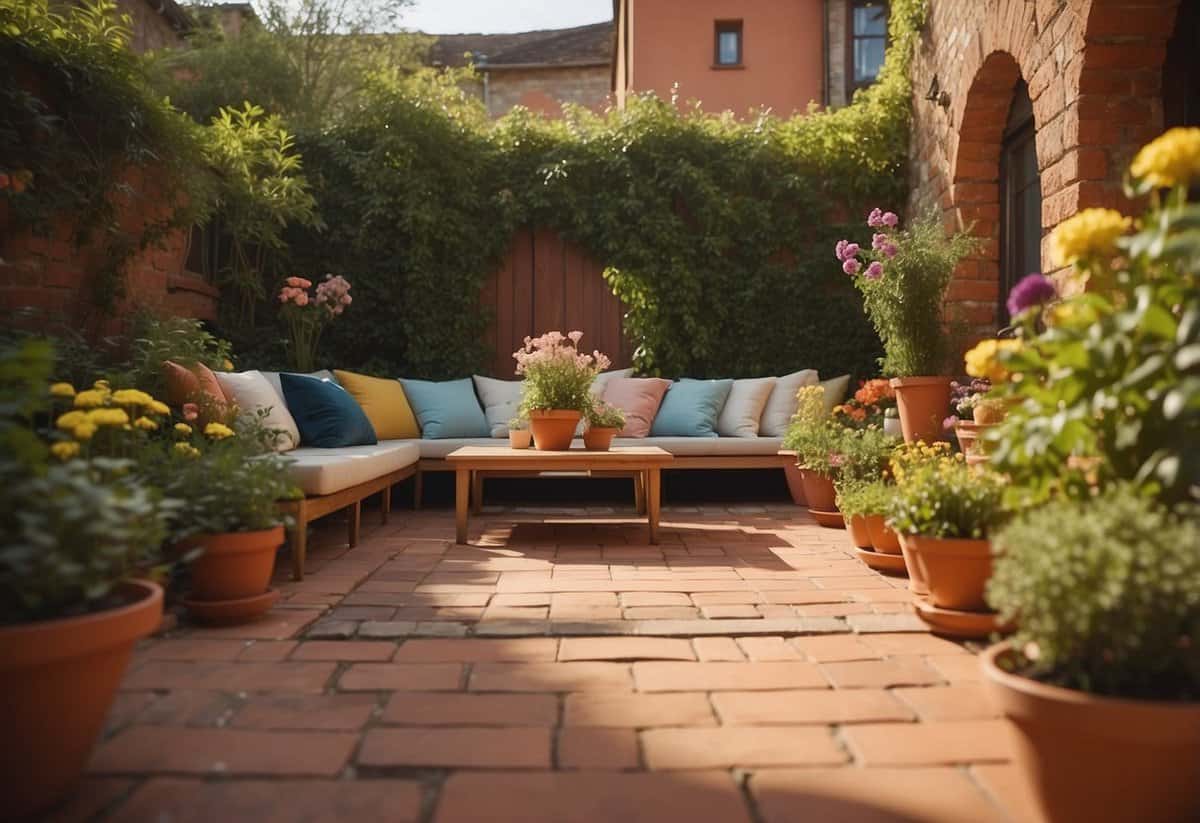
Terracotta patio slabs bring a warm, Mediterranean vibe to your garden. They’re perfect for creating a cozy and inviting outdoor space.
You can pair terracotta paving slabs with intricate edging tiles for added elegance. These slabs are durable and weather-resistant, making them a practical choice for any garden.
For an authentically Adriatic feel, you can combine these slabs with lush greenery or rustic furniture. Terracotta’s rich, earthy tones create a timeless look that fits well with many garden styles.
Why Choose Slabs for Your Garden?

Slabs can create a clean, polished look for your garden. They come in various sizes, colors, and textures, giving you plenty of options to match your space. Whether you want a modern or traditional feel, slabs can help achieve the look you desire.
Easy Maintenance
Slabs require low maintenance. Unlike grass or gravel, they don’t need regular weeding or mowing. Simply sweep them occasionally to keep them looking nice. If you use durable materials, they can last for years with minimal upkeep.
Versatile Design
You can use slabs to create different garden areas. Design a cozy patio for seating or a winding path through your plants. Slabs offer flexibility in design and layout, making them suitable for various garden styles and sizes.
Durability
High-quality slabs withstand weather elements. Materials like sandstone or concrete can handle heavy foot traffic and resist damage from rain or sun exposure. This durability makes them a practical choice for busy outdoor spaces.
Environmental Benefits
Certain types of slabs, like permeable paving, allow water to drain through. This helps reduce runoff and promote groundwater recharge. Using eco-friendly materials can also minimize your garden’s environmental impact.
Safety
Slabs create even, stable surfaces. This reduces the risk of trips or falls, making your garden safer for everyone. Choose slip-resistant slabs to enhance safety, especially in wet conditions.
Check out these 16 garden paving ideas for more inspiration on how to use slabs in your garden. For tips on picking the right slabs, you might find this guide on choosing paving slabs helpful.
Designing with Garden Slabs

When designing with garden slabs, two key factors are crucial: layout patterns and the selection of colors and textures. These choices greatly impact the aesthetic and functionality of your outdoor space.
Layout and Patterns
Choosing the right layout and pattern for garden slabs is essential for creating a harmonious outdoor area. You might consider traditional grid patterns, which are easy to install and provide a clean look. Alternatively, a herringbone pattern adds visual interest and complexity.
For a natural feel, try random layouts with different slab sizes. This can mimic the look of natural stone pathways. Interlaying slabs with gravel can define spaces and create contrast. Curved layouts soften the rigid lines and make the space feel welcoming.
Spacing is equally important. Tight spacing has a sleek, modern look, while wider gaps can be filled with grass or pebbles to add texture. Be sure to account for drainage needs to prevent water pooling.
Color and Texture Selection
Colors and textures play a significant role in how your garden slabs affect the overall atmosphere. Neutral tones like grey, beige, and brown seamlessly blend with natural surroundings. For a bold statement, consider darker shades.
Texture enhances both the look and feel of the slabs. Smooth textures are modern but can be slippery when wet; textured surfaces offer better grip. Varied textures in a single layout can add depth and interest.
When selecting your slabs, think about how the colors and textures will change with weather and age. Porcelain pavers offer durability and a wide range of finishes for various styles. Mixing different materials like stone, concrete, and porcelain can create a unique and personalized outdoor space.
Choosing the right combination of layout, pattern, color, and texture ensures your garden slabs will both look beautiful and function effectively.
Installation Tips

Installing garden slabs can seem challenging. With the right preparation and techniques, it can be a smooth and rewarding process.
Preparing the Ground
Start by marking the area for your patio. Use stakes and string to outline the exact area. Once marked, remove all grass, roots, and debris. Dig down about 6 inches to create space for the base material.
Next, level the ground. Use a bubble level to check that the surface is even. This is important for preventing water pooling on your patio. If needed, add a slight slope (1 inch per 48 inches) to help with water drainage.
Build a solid base: Fill the dug area with a 4-inch layer of crushed stone or gravel. Compact this layer firmly using a tamper. This helps to stabilize the surface and prevent movement.
Lastly, add a layer of sand about 1-2 inches thick. Use a rake to spread it evenly, then smooth it out with a level. This creates a base for the slabs and eases the leveling process.
Laying the Slabs
Begin laying your slabs from one corner. Place each slab in the sand base and press down gently. Use a rubber mallet to tap the slabs into place and ensure they are level with each other.
Maintain consistent spacing between slabs. Use spacers or a wooden stick to keep uniform gaps, usually around 1/4 inch. This space allows for expansion and drainage.
Check leveling frequently: As you lay more slabs, keep checking with a level to ensure continuity. Adjust by adding or removing sand until each slab sits perfectly.
After laying all slabs, fill the gaps with sand or mortar. Sweep the material into the cracks and hose down lightly to settle it.
Remember to clean any excess material immediately to prevent staining. Once done, your garden patio will be ready for years of enjoyment.







